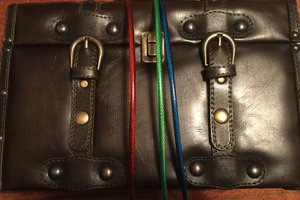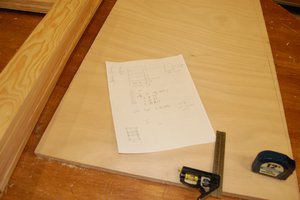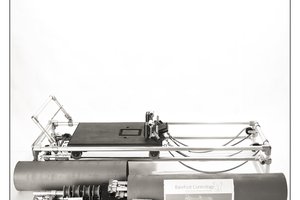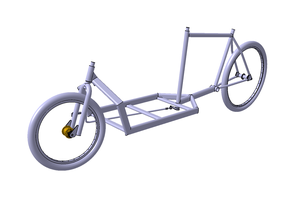Workshop wrestle
The setting up of a (largely) hand-tool woodworking workshop based on selected engineering methodologies.
The setting up of a (largely) hand-tool woodworking workshop based on selected engineering methodologies.
To make the experience fit your profile, pick a username and tell us what interests you.
We found and based on your interests.
Time now, I think, to undertake some research into different storage options (tool cabinets, mobile tool racks/trolleys, toolboxes, etc.). I'll update this log with some examples as I come across them.
Lean Foundation Training (Excerpts from the Thornley Group)
Activities consolidation
There are certain activities that I’m likely to undertake around the same time. When starting a project, for example, I need to measure and mark out joints and desired shapes, and then undertake the shaping and jointing. So, going through the various activities I’ve come up with the following groupings starting with putting on PPE:
0) Personal Protective Equipment (PPE) + toolbelt
Standard kit
- Jacket
- Trousers
- Steel-capped boots
- Gloves
- Toolbelt
Additional kit when using powertools *
- Face mask
- Hearing protection
- Respiratory filters
* Am saving up for a proper positive-pressure powered respirator but they are many hundreds of pounds.
1) Marking, shaping, and jointing
- measuring and marking tools
- squares
- rules
- pencils, rubber, sharpener, and holder
- marking guages
- scribes
- measuring tape
- plumb line
- spirit levels
- compasses
- digital calipers
- miscellaneous marking templates
- drilling and Dremel-carving kits
- holesaws
- spade bits
- Forstner bits
- chamfer and countersinking bits
- etc.
- chisels (carving)
- chisels (jointing)
- routers (hand), blockplanes, spokeshaves
- wood planes (smoothing and planing)
- jigsaw, Dremel, and router kits (includes accessories and bits)
- collection of hand saws (tenon, coping, etc.)
- rasps and files
- collection of awls
- collection of punches
2) Assembly (Gluing, clamping, and assembly)
- medium and large clamps (small ones hang from my light bar)
- quick action (F and spreader)
- Sash
- spring
- corner
- G
- band (ratchet strap)
- glues and glue clean-up
- affixing kit (screw and other specialist bits, adaptors, nail guns, spanners, socket set, rivet gun, consumables)
- assembly kit (measuring tape to measure square, engineers’ squares, ratchet straps, etc.)
- dead-weight mallet
- protection blocks (timber/cork) for protecting timber to being clamped
- masking tape
- water
3) Finishing (lacquers, sanding, waxes, etc.)
- rags
- spray gun
- containers
- sanding kit (hand and powered sanding)
- sanding blocks
- sandpaper
- small scraps
- sheets
- random orbital sander
- belt sander
- disc sander
- brushes
- sealed cabinet for lacquers, oils, etc. to minimise the breathing in of VOCs
- disposable gloves
- epoxy, lacquers, oils, waxes, paints
- masking tape
- polishing discs/materials/etc.
Human factors continued | Accessibility bands
Like with the zones, the areas for best accessibility are in front of me within an arc angle from left to right of approximately 135°. I’ve just guestimated this by waving my hands around holding a few tools (drill and metal rule). I’ll need to revisit all this once I’ve read up on some human factors research.
For height, I’ve identified three bands of decreasing accessiblity. Band 1 is easy to access, Band 2 is moderately easy, while Band 3 is a little more difficult. Unfortunately, my workshop ceiling, bonnie as she is, is fairly low (at just 1900ml high). This really restricts the height of Band 1 from that point down and also means that I don’t have any Bands above that point (unlike in my garage). Again, waving around some tools (this time including heavier items like my plunge router) I’ve come up with the following bands:
| Band 1 | Just above bench height up to just above head height. For me, this equates to 800–1900mm from the floor. |
| Band 2 | From 400–800mm from the floor. |
| Band 3 | From the base of the unit/cabinet/shelf/trolley up to 400mm upwards. |
Human factors engineering
Here's an initial basic consideration of human factors. I'll need to return to this later but there are some obvious aspects to consider immediately. There are certain places and actions that are better than others, for example, reaching too high or too low, twisting actions, and lifting heavy items over long distances are to be avoided where possible.
So, here are some early ideas:
So, I've had a wander around my workshop and thought about the different sorts of jobs I might be working on (e.g., making a cabinet, bedside table, or a timber lamp) and the activities (e.g., sanding, planing, glueing) needed to do those jobs.
The main working place will be my bench and, in particular, my bench vice. I've already put an overhead storage system in place that I'm using for holding my collection of smallish clamps.
This is working so well that I'm going to keep it for the time being. I use clamps on a regular basis to hold pieces while I work on them, for assembly, and during the glueing process. And I often need to hold a piece in one hand and grab a clamp with another. This means that I really ideally need the clamp always within arm's reach.
Here are the zones I've worked out so far:
| Zone 1 | On me (i.e., my toolbelt) |
| Zone 2 | In front of me (on my bench, overhead storage) |
| Zone 3 | Mobile storage trollies, toolboxes |
| Zone 4 | Workshop walls (e.g., in a tool cabinet) |
| Zone 5 | Storage cupboards/drawers (noting that there can be memory burden with these) |
| Zone 6 | Under work bench (I don't have much room around my workbench so reaching under it is problematic) |
| Zone 7 | Storage outside the workshop (e.g., in the garage) |
They are listed in decreasing order of accessibility.
List of common woodworking activities in no particular order:
N.B. I'll not include milling and sawing in the above list because it will be done with powered workshop machinery. This also includes cutting milled timber to length with my compound radial arm saw (which I also use sometimes for roughing out fixed tenons).
Edit: Now updated with expected frequency that I'll undertake each given activity [1–4] where the number increases with increasing frequency.
Preliminary design approach
Derived from Lean’s mura principle, I'm thinking I'll minimise geographic and time waste by locating items according to frequency of use; that is, store those items I will use more frequently closer to me and those less frequently further away.
How to do this in practice? This won’t be perfect but I’m thinking I’ll start with the following steps:
Here's a rough design methodology (ies) I'll be working from. This will be somewhat flexible depending on how well I'm able to learn and apply them (together) for the project.
Design methodology
Following a basic engineering project methodology, I'll start with the aims and assumptions:
Aim
To create a highly functional, ergonomic, and safe space for woodworking.
Assumptions
Create an account to leave a comment. Already have an account? Log In.
Become a member to follow this project and never miss any updates
By using our website and services, you expressly agree to the placement of our performance, functionality, and advertising cookies. Learn More

 Chuck Buckley
Chuck Buckley
 Geoff Nicholson
Geoff Nicholson
 joseph
joseph
 Pierre-Loup M.
Pierre-Loup M.